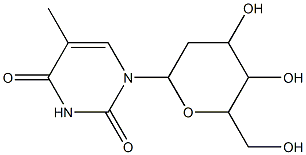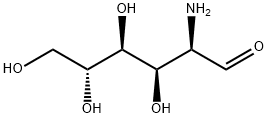Decylamine
Synonym(s):1-Aminodecane;NDA
- CAS NO.:2016-57-1
- Empirical Formula: C10H23N
- Molecular Weight: 157.3
- MDL number: MFCD00008149
- EINECS: 217-957-7
- SAFETY DATA SHEET (SDS)
- Update Date: 2024-12-18 14:15:30

What is Decylamine?
Chemical properties
It is a clear, colorless, flammable, liquid with a ammonia odor. Slightly soluble in water, easily soluble in ethanol, ether, acetone, benzene and chloroform.
The Uses of Decylamine
Decylamine was used in the synthesis of dynole 2-24 series by undergoing reductive amination with 1-(3-(dimethylamino)propyl)-1H-indole-3-carbaldehyde. It was also used as a coordinating solvent to thermolyse the lead piperidine and lead tetrahydroquinoline dithiocarbamate (DTC) complexes.
The Uses of Decylamine
1-Decylamine is a intermediate forming the phosphatidylcholine-decylamine liposomal membranes.
What are the applications of Application
Decylamine has been used as:
Amine in the synthesis of dynole-2-24 by reductive amination with 1-(3-(dimethylamino)propyl)-1H-indole-3-carbaldehyde.
A modifier in the synthesis of nanocomposites based on poly(butylene terephthalate) and C60 nanoparticles.
A template in the synthesis of ordered two and three dimensional mesoporous iron oxide.
Definition
ChEBI: Decylamine is an alkylamine.
Synthesis Reference(s)
The Journal of Organic Chemistry, 43, p. 2259, 1978 DOI: 10.1021/jo00405a036
Synthesis, p. 450, 1989 DOI: 10.1055/s-1989-27284
General Description
Decylamine is a hydrophobic long alkylated cationic ammonium that is used to modify the polarity of reversed phases on octadecylsilyl (ODS) gels.
Safety Profile
Poison by ingestion and skin contact. A skin irritant. Flammable when exposed to heat or flame; can react with oxidizing materials. To fight fue, use alcohol foam, foam, dry chemical. When heated to decomposition it emits toxic fumes of NOx. See AMINES and AMINES, FATTY.
Properties of Decylamine
| Melting point: | 12-14 °C(lit.) |
| Boiling point: | 216-218 °C(lit.) |
| Density | 0.787 g/mL at 25 °C(lit.) |
| refractive index | n |
| Flash point: | 186 °F |
| storage temp. | room temp |
| solubility | Chloroform, Ethyl Acetate |
| form | Liquid |
| pka | 10.64(at 25℃) |
| color | Clear colorless to yellow or brown |
| BRN | 1735220 |
| Stability: | Stable. Incompatible with strong oxidizing agents, acids, acid chlorides, acid anhydrides. Absorbs carbon dioxide from the air. |
| CAS DataBase Reference | 2016-57-1(CAS DataBase Reference) |
| NIST Chemistry Reference | 1-Decanamine(2016-57-1) |
| EPA Substance Registry System | Decylamine (2016-57-1) |
Safety information for Decylamine
| Signal word | Danger |
| Pictogram(s) |
 Corrosion Corrosives GHS05  Skull and Crossbones Acute Toxicity GHS06  Environment GHS09 |
| GHS Hazard Statements |
H314:Skin corrosion/irritation H410:Hazardous to the aquatic environment, long-term hazard |
| Precautionary Statement Codes |
P270:Do not eat, drink or smoke when using this product. P273:Avoid release to the environment. P280:Wear protective gloves/protective clothing/eye protection/face protection. P303+P361+P353:IF ON SKIN (or hair): Remove/Take off Immediately all contaminated clothing. Rinse SKIN with water/shower. P305+P351+P338:IF IN EYES: Rinse cautiously with water for several minutes. Remove contact lenses, if present and easy to do. Continuerinsing. |
Computed Descriptors for Decylamine
Decylamine manufacturer
New Products
Tert-butyl bis(2-chloroethyl)carbamate (S)-3-Aminobutanenitrile hydrochloride N-Boc-D-alaninol N-BOC-D/L-ALANINOL 3-(2,4-Dimethoxybenzyl)dihydropyrimidine-2,4(1H,3H)-dione 7-Bromo-1H-indazole N-octanoyl benzotriazole 3,4-Dibenzyloxybenzaldehyde 4-Hydrazinobenzoic acid Electrolytic Iron Powder Fmoc-Val-Cit-PAB 1,1’-CARBONYLDIIMIDAZOLE R-2-BENZYLOXY PROPIONIC ACID 4-HYDROXY BENZYL ALCOHOL 1,1’-CARBONYLDI (1,2-4 TRIAZOLE) S-2-CHLORO PROPIONIC ACID (2-Hydroxyphenyl)acetonitrile 4-Bromopyrazole 5-BROMO-2CYANO PYRIDINE 5,6-Dimethoxyindanone 5-broMo-2-chloro-N-cyclopentylpyriMidin-4-aMine 1-(4-Methylphenylsulfonyl)-1H-1,2,3-benzotriazole 1-(2-Chlorobenzyl)-4-nitro-1H-pyrazole 1-(2-Nitrophenyl)-4-phenylpiperazineRelated products of tetrahydrofuran








You may like
-
 2016-57-1 1-Decylamine 98%View Details
2016-57-1 1-Decylamine 98%View Details
2016-57-1 -
 1-Aminodecane CAS 2016-57-1View Details
1-Aminodecane CAS 2016-57-1View Details
2016-57-1 -
 Decan-1-amine 95 % CAS 2016-57-1View Details
Decan-1-amine 95 % CAS 2016-57-1View Details
2016-57-1 -
 Decylamine CAS 2016-57-1View Details
Decylamine CAS 2016-57-1View Details
2016-57-1 -
 Decylamine CAS 2016-57-1View Details
Decylamine CAS 2016-57-1View Details
2016-57-1 -
 1446013-08-6 Fmoc-His-Aib-OH TFA 98%View Details
1446013-08-6 Fmoc-His-Aib-OH TFA 98%View Details
1446013-08-6 -
 2-ETHYLPYRIDINE 100-71-0 99%View Details
2-ETHYLPYRIDINE 100-71-0 99%View Details
100-71-0 -
 13162-05-5 99%View Details
13162-05-5 99%View Details
13162-05-5